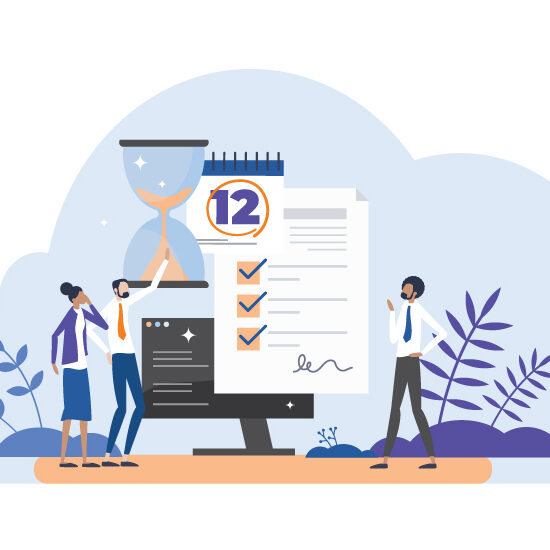This software typically includes time tracking and compliance tools, timesheet creation, task management, and other common workplace functions. The data provided by an employee productivity platform can be used to monitor performance and measure progress toward goals.
Here are some ways you can use an employee productivity platform to measure and track productivity.
1. Setting productivity goals
Many employees underperform because their employer hasn’t stated what’s expected of them or how to use their time. With an increased number of employees working remotely, communicating clear expectations about productivity is more important than ever. For accountability, follow up by establishing deadlines.
2. Accurately tracking employee time
Effective time-tracking tools measure how much time employees spend at work. Requiring them to clock in and out is the best way to avoid inaccuracies in reported hours. Depending on how they’re used, tracking tools can also show how employees spend time during the day. They can help you calculate the total time worked by recording each employee’s PTO for holidays, vacation, and personal time.
3. Supporting transparent task management
To be productive, employees must be able to access information needed to do their job. Task management tools that support transparency and open communication help employees feel more engaged at work. Managers can enforce accountability by assigning daily tasks visible to an entire team, department, or organization and monitoring progress until completion. An employee productivity platform will also track tasks transferred between team members or to different departments so nothing falls between the cracks.
Slack CEO Stewart Butterfield states, “Transparency is about more than executives being forthcoming. It’s about whether people within an organization can actually see what’s going on in different departments and working groups.”
4. Focusing on quality metrics
Understanding productivity of an organization is key to effective planning and decision-making. There are several methods for measuring productivity, including the quantity of output. Try focusing on the quality of each employee’s output rather than the total amount. This provides a more realistic picture of the employee’s contribution to the bottom line.
5. Measuring customer service productivity
Companies with call centers and other forms of customer service should develop separate productivity measures because these team members don’t produce output like factory or office employees. Some organizations measure their productivity based on the volume of service provided per hour or on the time required to complete a customer transaction. You should choose a metric that conforms to your business needs.
6. Basing productivity on profit
For businesses of all sizes, knowing how productive your employees allow you to commit to deadlines and take on new projects. However, many leaders of small businesses don’t have time to break down productivity for individual employees. Instead, they use company profits versus the amount spent on employee salaries to measure productivity.
Why You Should Care About Increasing Employee Engagement
Experts say that most U.S. employees are only productive for 60 percent of their work time. Organizations that want to beat this average should help employees focus on high-value tasks by providing all the materials and equipment needed to perform tasks efficiently. Although it’s not easy, getting employees to engage with their work on an emotional level can also boost productivity.
Choosing an Employee Productivity Platform
If you’re not measuring and tracking employee productivity, it’s time to start. Understanding productivity is the first step in improving it, but you need the right tools for the job. Your best choice is a platform that matches your scheduling and tracking needs.
The coAmplifi employee productivity platform lets you track and review hours worked, completed tasks, customer service information, and other productivity measures. For organizations with remote employees, coAmplifi can remove the mystery of what they’re doing. You decide how you want to measure productivity, whether it’s tasks completed on time or the number of hours worked, and coAmplifi provides the data.




